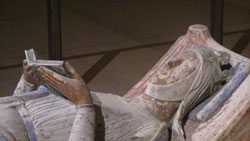by Marsha Qualey
 One of the great good fortunes of my life is that I’ve managed to create a professional life that requires I read a lot. Reading is a passion; the old bumper sticker says it all: I’d rather be reading.
One of the great good fortunes of my life is that I’ve managed to create a professional life that requires I read a lot. Reading is a passion; the old bumper sticker says it all: I’d rather be reading.
But I also think reading is an interesting topic. How and why do we read? Who were the first readers? How has reading been used to oppress and liberate? How and why does reading — the physical act of reading — vary from culture to culture? Why — unlike so many outspoken proponents of one technology or the other — does my cat not care whether I read a hard copy book or use my Kindle? (He’s happy to paw or plop on either when he wants my attention.)
Alberto Manguel’s A History of Reading has answers to most of those questions, and it poses and answers a great many more. Though wonderfully illustrated, the book is text-heavy, and it’s written for readers with some knowledge of world history. In other words, tough going for young readers.
However, the history Manguel weaves is chock full of gems that could entertain and intrigue readers of any age if carefully culled and presented.
Foremost among them, a centerfold: A Reader’s Timeline. Here are just a few of the items on Manguel’s timeline:
- c. 2300 BC: The first recorded author, the Sumerian high priestess Enheduanna, addresses a “dear reader” in her songs
- c. 200 BC: Aristophanes of Byzantium invents punctuation
- c. 1010: At a time when “serious reading” in Japan is restricted to men, Lady Murasaki writes the first novel, The Book of Genji, to provide reading material for herself and the other women of the Heian Court

Also of immediate value are the examples of the many depictions of reading in visual art through the ages, a list of which could provide a good start for a motivated young researcher.
The evolution of reading and its influence on individuals and societies provides a wonderful angle for studying history. But if that doesn’t work for your young readers, there’s always Manguel’s earlier book: The Dictionary of Imaginary Places, a comprehensive and celebratory catalogue of fantasy settings from world literature.
A native of Argentina, Alberto Manguel now lives in Canada.

We are so lucky in Minnesota to have so many resources for readers and writers. Thank you for your part in Bookology. I enjoy the articles.
Where can I get a bumper sticker that says I’D RATHER BE READING ?
Thanks for your kind words about Bookology, Norma. As for the bumperstickers, I’ve seen them about but never actually gotten my hand on a new one.